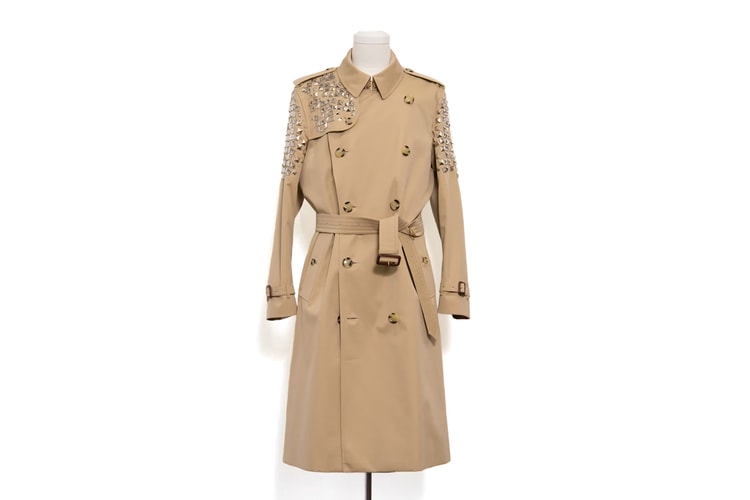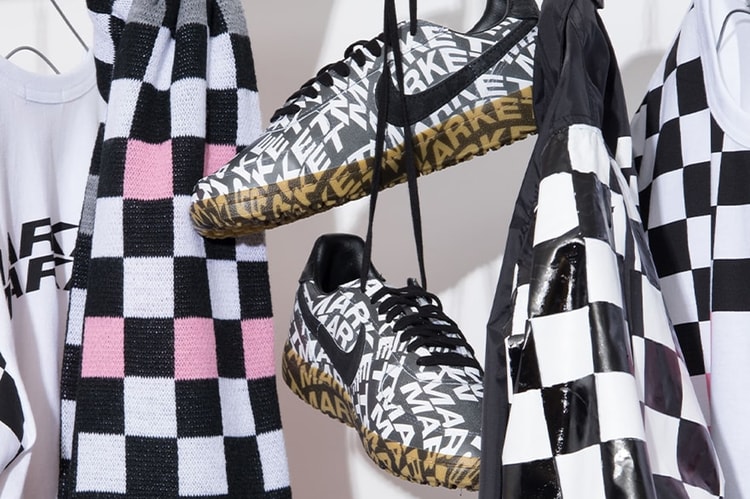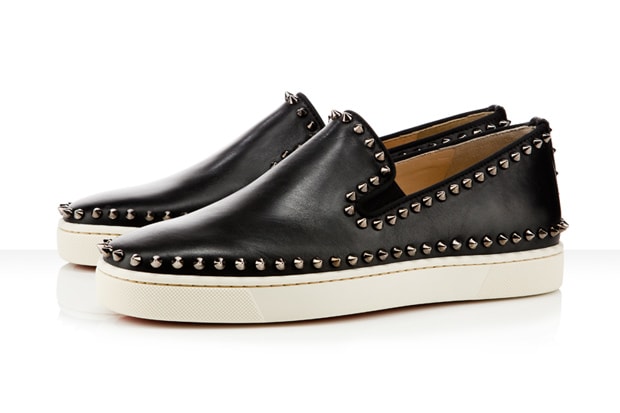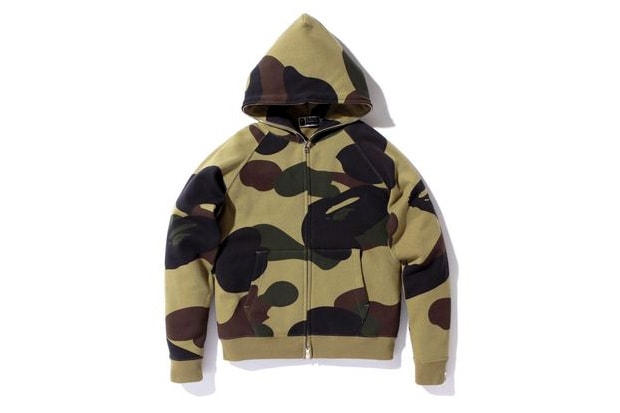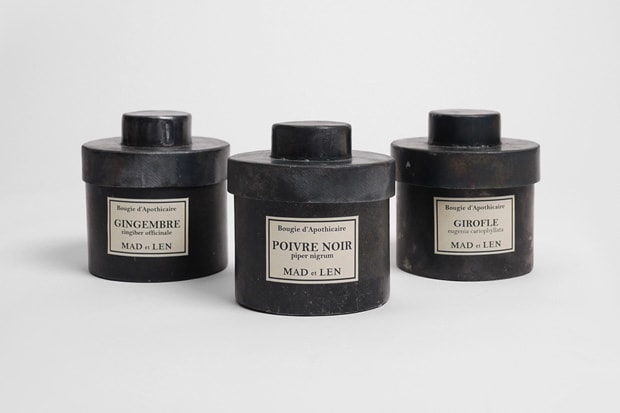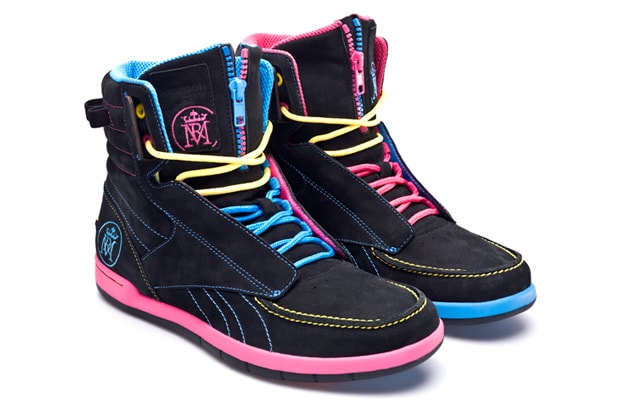Adrian Joffe: The Idea of COMME des GARÇONS
When Rei Kawakubo presented her first show in Paris under the name ‘COMME des GARÇONS’ in 1981, it
When Rei Kawakubo presented her first show in Paris under the name ‘COMME des GARÇONS’ in 1981, it was received as a ground breaking collection. However not everyone in the Paris fashion system was ready for this change as she approached the fundamental core of the fashion system from a much different angle. Many collections later, COMME des GARÇONS has proved its worth in becoming one of the most influential fashion brands to emerge. That particular collection several decades ago ended the French Fashion Syndicate’s influence in the fashion industry and sparked off a new era of creation and brand management.
As the emerging Chinese market grows leaps and bounds every few months, the fashion hungry recently enjoyed a great boost thanks to the partnering of COMME des GARÇONS and I.T on the creation of I.T Beijing Market. Sharing the spotlight with another influential Japanese brand in A Bathing Ape, the two will spearhead the foundation of progressive fashion in China.
At the recent opening, we spoke with COMME des GARÇONS International’s President and Rei Kawakubo’s husband Adrian Joffe and discussed the importance of having a coherent identity, the notion of creation, Kawakubo’s fundamental beliefs and the common misconceptions of COMME des GARÇONS and Rei Kawakubo.
Interview: Edward Chiu
Text: Eugene Kan
Photography: Louis Lau
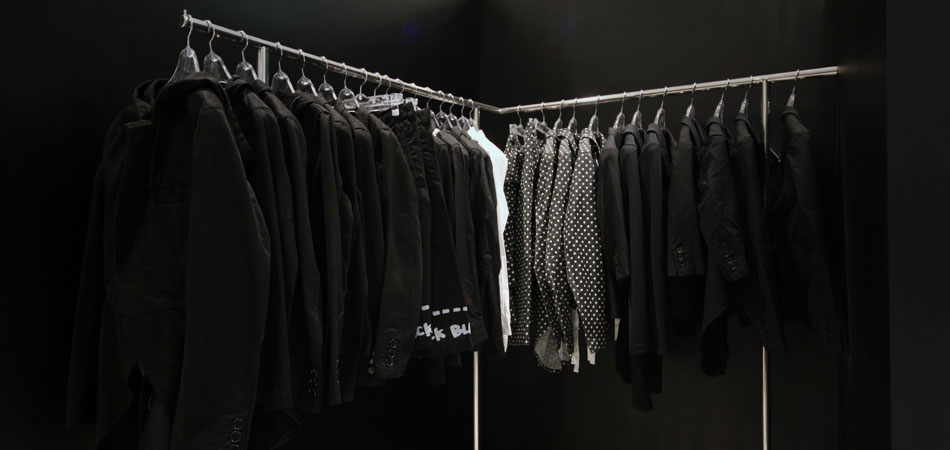
Interview with Adrian Joffe
Rei Kawakubo’s first collection “Lace” which debuted in Paris, 1981, marked the end of the French Fashion Syndicate’s influence in the fashion industry and began a new era of radical fashion. Did she achieve this by not referencing the old but by creating the new? Or simply the will to work against the fundamental core of the fashion system, which fashion has to be beautiful?
It’s always been the aim of not doing like everybody else or rather searching to make things that didn’t exist before. She basically founded the company on the premise of creation. You can see it like a tree, the roots won’t change but the branches will keep on growing, therefore the fundamental spirit has always stayed the same. Maybe sometimes, her creation is also a reaction to something, so in a way your second question does place into action. I remember about 13 years ago, she visited New York and she saw a lot of black in the GAP stores on every corner and was very astonished as the combination of fast fashion and black was not something she expected. She used mostly Black in ‘81 when the color wasn’t used at all in high fashion, so she was very shocked and said that after 20 years, suddenly everything turned black and gothic. As a reaction to that, she created her next collection “Bumps”, so in some ways it can be true. Sometimes its the reaction against what she sees, experiences and the feeling of shock or anger which can spark off another collection. So I think it’s a mixture of one and two, it has to be a mixture.
Rei Kawakubo has always challenged fashion norms such as fusing masculine and feminine motifs, introducing the distorted shapes and cuts in her silhouettes – specifically straying away from what constitutes the ideal. Design aside how do these values apply and shaped her identity as a brand?
Rei designs everything of the company. Her values permeate everything that constitutes the brand; The clothes, the shops, the printed matter, the way the clothes look in in the shops, the name cards and the retail strategy, all cannot be separated.
Similar to British artist Rachel Whiteread’s negative space sculptures, Rei Kawakubo’s clothing is not about the object but the space around the object. Does she see this as an easier route into designing or the fact that she wants to explore where other designers have overlooked?
First of all, there’s no easy route into designing. Forty two years ago when she first started, it was maybe easier because she had never done anything before. But as time goes by, the breadth of possibilities narrows and the weight of experience becomes heavy. So it’s more and more difficult to stick with the original concept of creating something new. It’s for her own self and trying to do something that she hadn’t done before. She doesn’t really look at other artists or designers’ work, as she isn’t interested in who it is and why it is. She will look at things and images and be moved or not as the case may be but she won’t analyze or define anything. She purely feels and strives for new grounds all the time because that is what she decided to base the company she founded on. She wants to be satisfied, but she’s never satisfied. This is the trouble for her, as she can never relax and she has to live with the dissatisfaction of her own work all the time, because being satisfied for one second might mean it would not be possible to strive any more.
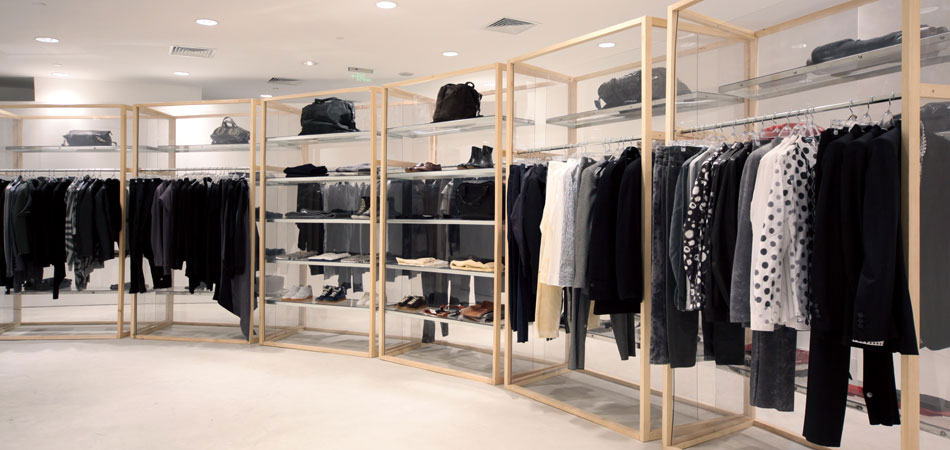
She once mentioned when bad taste is done by COMME des GARÇONS, it becomes good taste. Does she look out for the bad taste in life and purposely manipulate them to create a part of COMME des GARÇONS’ vision?
I think it’s really just a personal thing, she sometimes takes what most people dislike and when she does it for her, it becomes something different. She gives herself limits and borders as it’s really hard to create with unlimited space. So by taking bad taste and recreating in CDG style it becomes good taste, because it’s done by her. Every collections starts with one concept, a word or one feeling and what was interesting to her in that particular moment.
It is known that Japanese designers such as herself were not happy to be branded as the “Japanese” back in the 1980s. Can you explain why this was the case? And also what is the reason behind the fascinations of death, shapes and black amongst the Japanese designers?
We cannot answer questions about the so-called “Japanese designers”. It was a mere accident that Rei was born in Japan.
All of the early Japanese designers who entered the Paris fashion system belonged to the post-war generation, and were taught whatever Western was acceptable and good. Was this a major impact in her work? And was it hard working with these ethnic boundaries in mind?
She never gave herself any ethnic boundaries, nor let them interfere with her work. From the beginning, she dispensed with any preconceived notions about western and eastern social mores and cultures, as all these things are irrelevant to her world. I strongly believe her work is at the highest possible level of creativity; What one would call pure creation perhaps, as she deliberately casts away all questions of upbringing, nationality, sociology and the like. So many times it comes from just from a feeling, an emotion, not a concrete reference.
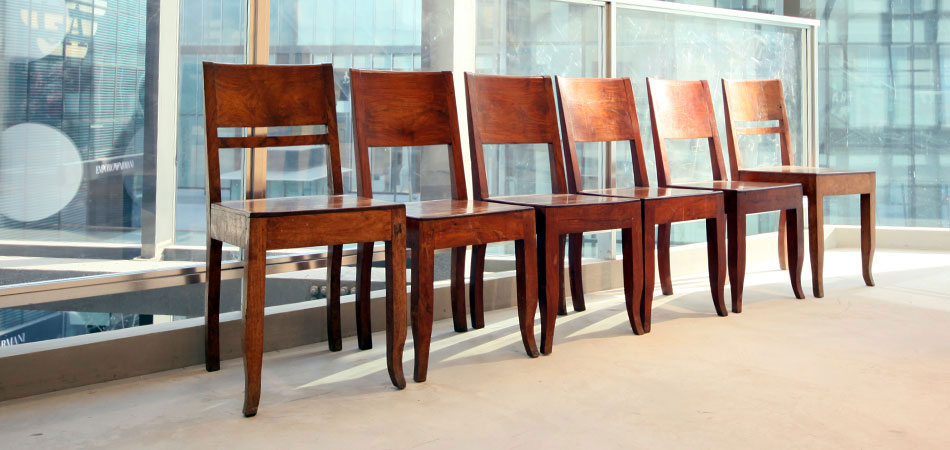
Many Japanese designers are reluctant to show outside of their domestic confines. Is this a limiting factor in Japanese fashion?
To be honest, I have no idea about the Japanese designers in general. Although I imagine that Japanese designers, in not showing outside their domestic confines, are no different to Indian, Brazilian, Ethiopian or Russian designers who show only in their countries. I don’t think it is any more or less true about so called Japanese designers. I think it is a fallacy that Japanese designers are any less international than any other countries’ designers. I also think that any perceived similarities between designers from the same country are purely superficial, if not entirely accidental.
Junya Watanabe, Tao Kurihara and Fumito Ganryu all have their own unique label under the COMME des GARÇONS family. Does Rei have any sort of creative direction over them? Or are they in full control to expand the aesthetics of the COMME des GARÇONS world?
100% creative freedom. Rei feels that they won’t be able to create if they don’t have creative freedom because she, for herself, needs creative freedom. Therefore she can’t give herself creative freedom and not give that to others. For her, the reason why she wants to create is in order to be free. She’ll let them produce whatever they like. So yes, completely creative freedom and no interference.
Is the majority of the internal COMME des GARÇONS design team Japanese? If so is it because of an inherent Japanese sensibility that makes them best suited for the brand?
There are only four designers at COMME des GARÇONS. Rei, Junya, Tao and Ganryu. The so-called team is called patterners. Most are Japanese not because of any policy but because of language. But we have more and more patterners and other workers now coming through from China and Korea. We welcome this, as we do not think Japanese sensibility has anything to do with anything and true creation knows no boundaries.

How does the PLAY line incorporate into COMME des GARÇONS? Does it lessen the design achievements of the rest of the other labels by relying solely on graphics?
Not at all, it doesn’t lessen anything. PLAY started 10 years ago and the idea of PLAY is creative but playful. It was a collection, created by not designing; it was the antithesis of design, based on prototypical forms. For her it was a fresh direction, as before her designs had to be new, but this time the idea itself was new for COMME des GARÇONS to do a collection that wasn’t designed, that it was only a t-shirt with one mark. There was only a one prototype, but with no design. Everything from graphics to shop, everything is an expression. In a way it is graphic, but it doesn’t lessen anything. It only adds to the expression of the company where everything she does its a way of expressing the values.
When it comes to collaborations, how important is it that the other party has longevity? Are newer artists/creative less able to enter the collaboration fold?
There’s no point to collaborate with another designer or artist unless there’s something that can be found in between. For example, we don’t make swimwear so we collaborated with Speedo who is the best swimwear makers. So there has to be some meaning to it. So many collaborations these days are meaningless, therefore we try to find collaborators who can have an added value for both parties. So the first collaboration we did was with Vivienne Westwood fifteen years ago. It was a shared philosophy, creation and freedom of expression. We hope for accidents and unexpected synergies that can be created through our collaborations.
Many established/high-end designer labels have gone the route of developing “Made for China” collections, what are your thoughts on this?
That is fine for them, but there are no plans for COMME des GARÇONS to make any specific collections for the China market, as we think of China and the rest of the world as one.
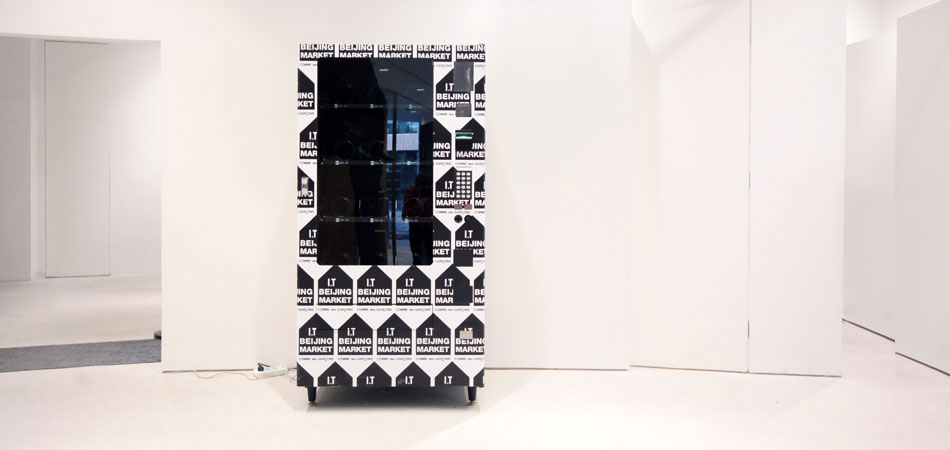
How damaging is the problem of counterfeit products in both China and on a global scale?
It’s a major pain in the ass, but the real thing is undoubtedly the best. The government should definitely intervene and take action against the people who copy.
With the expansive scope of COMME des GARÇONS now, how much input does Rei maintain? Some things are beyond her control, but how does she deal with that?
Rei maintains total control of everything from the initial idea to the final outcome, especially for everything visual. And for the business side of things, she leaves a lot of that to me.
As Rei’s retail space concept has always been a continuation of her own ideals, how much has that changed since her early beginnings? And how will COMME des GARÇONS adapt to the online retail boom?
Her ideals have always stayed the same way and will never change. She will simply search for new ways to express her feelings, thoughts and ideas. However, she won’t be adapting any time soon to the recent online retail phenomenon, although we’re not ignoring that fact and have started some experiments. On the other hand, our Dover Street Market online shop’s sales figures have increased by 250% from 2009!
How much longer can COMME des GARÇONS remain with a limited online presence? Why has the brand stayed offline for so long?
She’s experimenting with each outlet. For example she’s letting me expand the Dover Street Market online shop and she just launched the COMME des GARÇONS website, but she doesn’t show anything obvious, just image and information. The time will come, but she takes her time with technology because she doesn’t feel it yet. She believes clothes have to be touched, so I doubt COMME des GARÇONS’ main collection will ever be on the website, however there are many creative possibilities which we’re looking into.

In a recent interview, Rei was quoted as being dismissive of the current crop of younger designers. Could you shed some light on what exactly she meant?
I believe you mean the interview that was published from the establishment rag known as WWD. We were rather upset if not shocked by the way they twisted the words of Rei and made it sound like she was dismissive of young designers in general. Everyone knows that Rei respects enormously all-young designers that work hard and believe in creation. COMME des GARÇONS are constantly on the lookout for creative talent to have in our multi mark shops, and anyone who knows Dover Street Market London will know we have many young designers there. She was merely making the comment about a lot of young people in general these days, not just in fashion, as they hope and expect for success too quickly and are too impatient. In her time, it took years and years before she was really able to make a proper living at making clothes. However she knows that the times are very different now and she knows how hard it is. She is in no way dismissive of young designers, as she only wants to encourage them to be strong and creative and follow their own vision. Sharing spaces with people like them is the fundamental idea behind Dover Street Market London and I.T Beijing Market.
Throughout the years, Rei has sparingly offered English language interviews, in reality is she less of a secretive person as many may believe?
This is another fallacy. Rei did at least ten or fifteen interviews in 2010 alone. We did five in Beijing just last week, even though WWD falsely called their particular one “rare”. What nonsense! She is not so much secretive as simply unwilling to talk about her private life and she doesn’t like being photographed. She basically doesn’t trust journalists because they often twist what she says and turn it around to make their point. She has very often been deceived by journalists in this way. The scandal mongering WWD’s article of last week is a case in point. Not only did they dare to publish a totally unauthorized photo of Rei, they also twisted many of her own words, or taking them out of context, to make them sound revelatory when they were not. For example, they made it sound that COMME des GARÇONS is for sale, which it totally isn’t. They called my 100% joke about waiting for an offer, a “half joke…”.
Looking at the current avant-garde landscape, who would you say is breaking the molds of the conventional notion of fashion?
We cannot mention anyone by name, since that would be unfair on the people who we simply may not be aware of… We can only wish anyone who works with their heart and soul and looks for something new the greatest of luck, because without creation there can be no progress.




